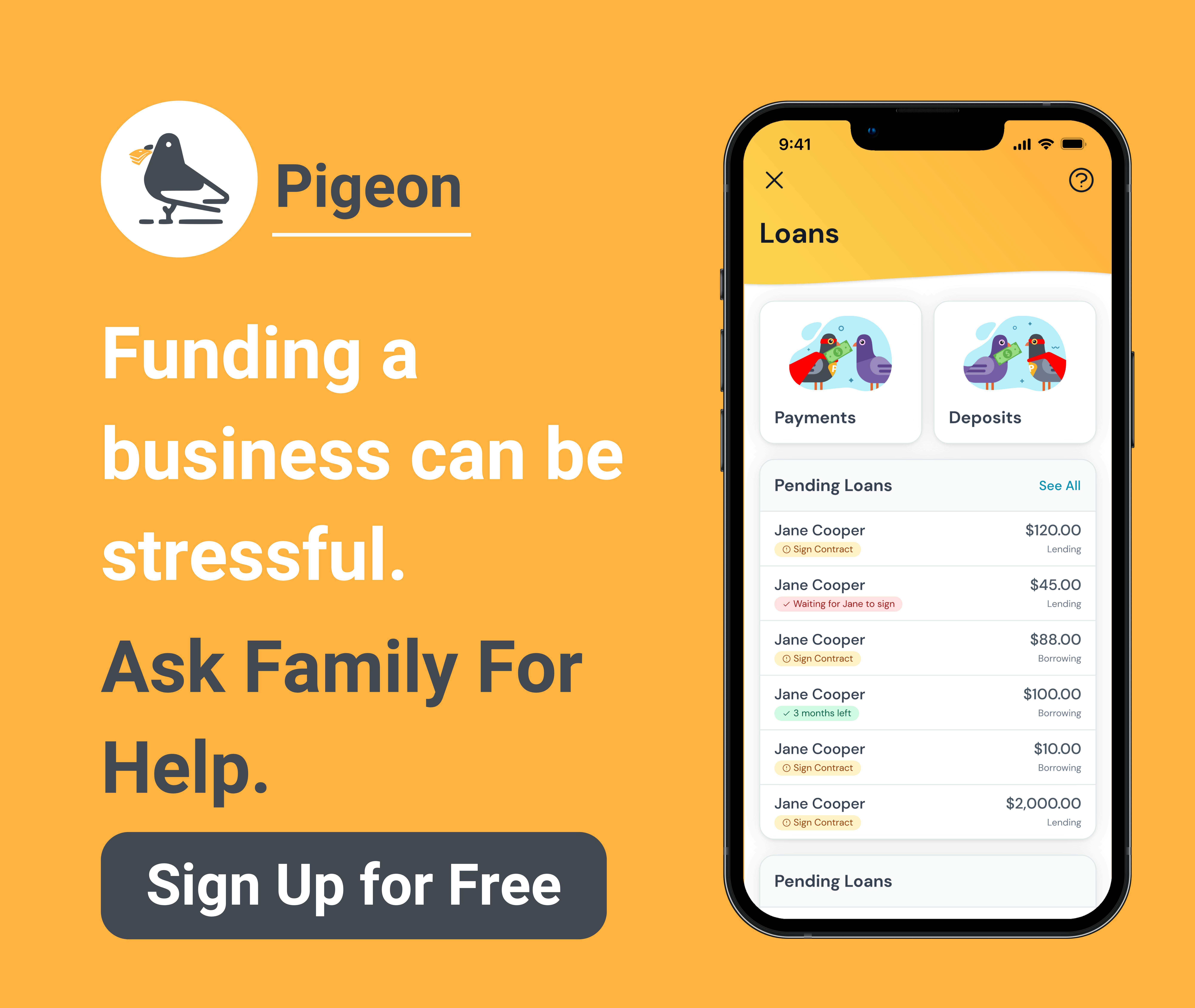As a new startup, your business needs money to launch, grow, and stay afloat. If you’ve been bootstrapping your startup using your personal savings, don’t worry—the road doesn’t have to end with you emptying out your bank account.
Sadly, for a lot of new companies, traditional financing such as a bank loan is off the table. 🙁
Luckily, however, alternative funding methods can be more flexible and advantageous for your business.
Let’s take a look at why traditional financing is hard for new startups to get, and highlight more creative funding options you can use to start or grow your new business.
Site note: If you’re a gig economy worker or freelancer, we have specific recommendations for gig economy loans.
Why traditional funding is difficult for startups

Getting funding as a new startup company can be challenging, especially if you’re trying to use traditional methods.
For example, working with financial institutions to get a bank loan usually requires strong cash flow, cash reserves, and a strong business track record, which isn’t well suited for startups or small businesses. Most banks want to see at least two years of healthy financial data before they even think about making you a loan offer.
As you might imagine, most new businesses don’t have these things.
This makes it more challenging for new business owners to get capital compared to those who are already established. It’s a Catch-22, chicken-and-the-egg problem. 🐣
Before you write banks off completely, you should know that they aren’t against lending to new businesses, it’s just the process involved in traditional lending is often labor-intensive and slow-moving. Startups don’t have the luxury of time.
The solution?
Alternative financing.
This style of financing involves anything that’s outside of the traditional financing realm.
Alternative financing can be more attractive for many reasons, like:
- Lower credit requirements. Traditional banks will decline loans for poor credit borrowers. Alternative financing options work around this.
- Lower time of operation thresholds. The time-in-business threshold is much lower, and entrepreneurs can even seek funding before launch.
- Faster approval. If you have a fast-moving business you might not be able to afford to wait weeks. Alternative funding can take as little as one week or less.
Plus, with alternative financing options, you can pursue multiple forms of funding, so you can make sure you always have a solid cash flow.
Five creative types of startup funding

1. Business Credit Cards
A business credit card can be a fast way to get instant access to funds. If used responsibly, they can work great to quickly fund your startup. However, the “used responsibly” part should be taken seriously. 🧑🏫
Business credit cards can offer you a revolving line of credit that gives you continual access to your funds until you reach your limit.
You can also get access to valuable perks like cash back, rewards, and more. This can help your business, especially if it’s early-stage, potentially save thousands every year.
Keep in mind, when looking for business credit cards it’s important to think about how you’ll be using your card. Interest rates can be high, especially if you’re creating funding for your business by using a cash advance.
There are 0% APR cards available, but getting approved for one will depend on your company’s size, monthly revenue, and account history, among other factors.
2. Personal Loans
Like many entrepreneurs starting a new business, you’ve hopefully been sharing your business ideas with friends and family so that they can offer you feedback, mentorship, or advice.
If you’re lucky, your friends and family may have even expressed a desire to invest some money in your startup, since they’re usually the ones most excited to support you and your new business.
Still, asking friends and family for a personal loan for your new startup or business is never easy. It can even be stressful and awkward leveraging your personal relationships since you don’t want to let money get in the way of a friendship or close bond.
Luckily, you can smooth this over and remove a lot of uncertainty and risk by using Pigeon.
With Pigeon you can easily create a loan agreement (aka ), then invite friends and family to make the loan happen in less than 10 minutes.
You can move funds quickly, set up payment reminders, and choose payback terms that work for you.
Alternatively, you can explore the option of securing a business loan or personal loan through the use of online lenders. There are a variety of service providers that can offer you a loan depending on your business history and your personal credit score.

3. Crowdfunding
Crowdfunding gives you a way of raising capital from a large number of people.
It flips the traditional funding model on its head. Instead of seeking a huge amount of cash from a single lender or investor, you get small amounts from hundreds or thousands of project backers.
You essentially pre-sell your product in exchange for early access, or some other type of reward for investing, such as equity in your company.
For example, the company Pebble Time used Kickstarter to raise over $20 million from over seventy-eight thousand backers to help bring its product to life.
This method of capital investment can let you raise cash without taking on any debt, or giving up any equity in your company.
The most popular crowdfunding platforms are Kickstarter and Indiegogo which let you tap into a massive network of existing supporters.
Beyond helping you get funding for your business, you also get the benefit of validating your product idea before launch. Instead of wasting time upfront, you’ll know your new business will be profitable from the start.
Plus, you can get attention for your new business you might not get elsewhere.
💡 Note: Most successful crowdfunding campaigns don’t happen like magic. They take a lot of marketing effort to get off the ground and get your campaign in front of interested supporters.
Beyond standard crowdfunding, there’s another form of fundraising called equity crowdfunding. With this, people give you money in exchange for an equity stake in your company aka equity funding.
If the standard crowdfunding model doesn’t suit your business, then this could be worth exploring. Some of the top equity crowdfunding platforms include WeFunder, Start Engine, and Republic.
At Pigeon, we were able to raise over $150k from 193 different backers by using WeFunder.
Another way crowdfunding is done is via donations. This works especially well for cause-based businesses, like non-profits, and software and services that truly enhance people’s lives.
The most popular platform for raising money via donations is GoFundMe.
4. Equipment Financing
A lot of new startups may need to seek out equipment financing to get their business going. Equipment financing is the practice of taking out a loan to purchase business-related equipment, such as a vehicle, restaurant oven, refrigerator or trailer. For example, a ghost kitchen may need a stove-top range, walk-in freezer, and much more just to get started.
Even if your business is fully online, you may need to finance computer equipment, 3D printers, and other essential tech-related items.
Equipment financing is unique since the rates can be more affordable, you fully own the equipment once the loan is paid off, and these loans are self-collateralizing - meaning if you don’t pay back, your lender will be able to repossess the equipment they helped you finance. 😨
With equipment financing you don’t have to rely as heavily on your credit score or time in business, making this option more accessible to startups.
There are all kinds of equipment loan providers that have different annual revenue and time-in-business requirements, so make sure to look for a lender caters to the stage where your business is currently at.

5. Small Business Loans & Grants
Startup and small business grants are usually pretty tough to get since it’s essentially free money and there’s a lot of competition.
The application for getting federal small business grants is long and complex. But, that doesn’t mean it’s not worth the effort to find and apply for these grants.
Beyond seeking out grants that are a great fit for your new startup, you can also consider a small business loan aka an SBA loan - or specifically SBA microloans.
The Small Business Administration (SBA) loans out money to non-profit lenders, then uses lenders to provide business loans for up to $50,000. These loans are flexible and can be used for buying equipment, as working capital, and more.
Online lenders can be a quick and convenient way to see if you qualify for a SBA 7(a) loan, a business line of credit, or a regular business term loan.
Keep in mind, these loans are smaller, and you often won’t be receiving the full $50,000. However, having a great business plan and credit score can help you secure some additional funding.
A final option is to check with your local Chamber of Commerce. There could be grants, contests, and other sources of funding that’ll have much less competition.

Bonus: Venture Capitalists and Angel Investing
Angel investors and venture capital funding are generally well-known and common funding sources for startups and businesses, especially in the tech space.
Venture capital firms and angels provide large amounts of capital to help a company get off the ground, in exchange for a piece of ownership in the business. Potential investors in this world can often have a large number of connections, tend to be wealthier individuals, and can act as a business mentors especially if you are leading an early-stage startup.
The ultimate goals for venture capital are for your company to experience high-growth, raise multiple rounds of funding, enter new markets, grow your valuation, and hopefully “exit” — either by being acquired by a larger company, or by going public via an IPO (Initial Public Offering).
Wrap Up
Every startup founder’s journey will be different. Hopefully, one of the creative funding options highlighted above will be the perfect fit for your business.
Don’t forget - you always have the option to pursue multiple forms of funding too. The more options you have, the less you’ll be stressed about cash flow and the more you can focus on the growth of your business.
Remember: Just because you’re having a hard time getting approved for traditional financing doesn’t mean your startup journey has to end. 😉

Want to read more related content? Check out some more of our awesome educational pieces below:



